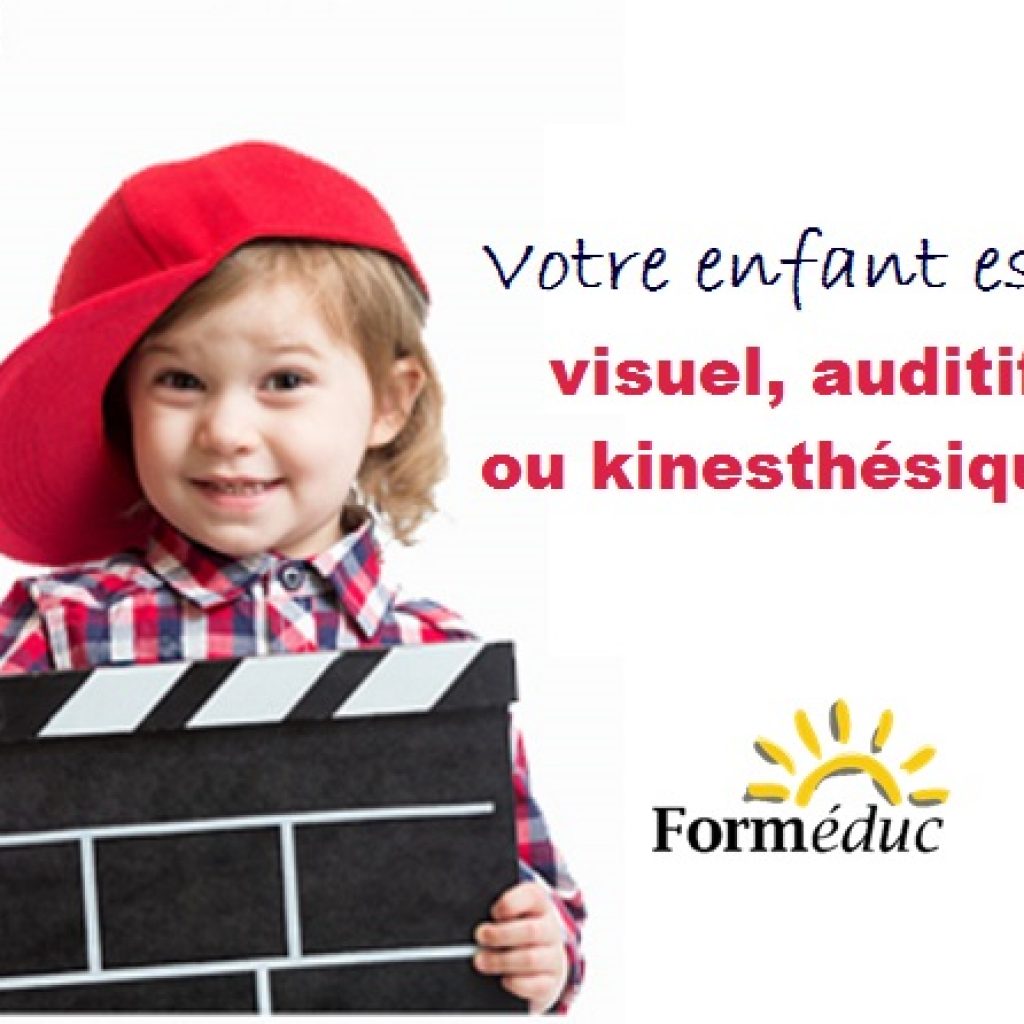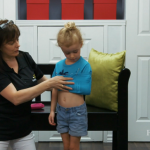

- 12 May 2021
- |
- Andrée Bouchard
In order to better understand your child and support him in his learning process, it’s important to know which senses he prefers to use to communicate. Although the sense of touch is the one most used by the child in the first few months of life, auditory and visual preferences soon emerge.
Nobody is 100% visual, auditory or kinaesthetic. It’s a preference for one mode of communication over another. There’s no point in forcing the child to work on developing one mode of communication more than another, since this preference is innate.
By observing the child, you can detect clues that will help you determine whether he or she is visual, auditory or kinaesthetic.
The visual child …
Visual children are curious and alert. He’ll do anything to attract your attention so that you’ll look at him. Visual children need precise explanations, if possible accompanied by visual support (pictures or demonstrations). Sight and thought are their dominant senses.
Some clues that the child is a visual type:
- He is proud and likes to be well dressed;
- He is afraid of the dark, because it prevents him from seeing clearly;
- He seeks the approval of others and often says, “Look at me!”
- He loves books and picture books;
- They seek eye contact when you speak to them;
- He “shows” you what he means by supporting his words with a drawing or by taking your hand to lead you to the place or object he wants to show you;
- He understands the concepts of shape, color and place;
- He is attentive to his movements and rarely injures himself;
- He prefers team sports or group activities.
What works well with a visual child:
- Eye contact when addressing him;
- Facial expressions that reinforce what you say;
- Motivation charts ;
- Visual aids (book, calendar, pictograms, photos, etc.) ;
- A place away from the others, well-defined, if it’s to be set back.
The hearing child …
Hearing children are calm and often good sleepers. They like to talk, ask questions and talk about all sorts of things, so you have to listen. When forbidden something, auditory children need logical explanations. The most effective disciplinary techniques with auditory children involve hearing, such as compliments and changes in tone.
Some signs that a child is auditory:
- He talks a lot and asks a lot of questions;
- He backs up his claims with details and tends to argue. He often says: “Listen to me!
- He doesn’t look where he’s going and tends to bump into things;
- He is sensitive to reprimands as well as compliments;
- He prefers solitary play;
- He is afraid of unfamiliar or loud noises (thunder, screams);
- He loves music and sound toys;
- It can continue to do a task and listen to you at the same time;
- He understands the concepts of duration and space-time.
What works well with a hearing child:
- Quiet environments;
- Verbal and detailed explanations, the right words ;
- Encouragement and congratulations;
- Changes in tone during interventions (retreats have little impact on him);
- Have him repeat the instructions.
The kinesthetic child…
The kinesthetic child loves tactile games and caresses. They often say: “Let me do it!” or “I can do it! He needs to experiment on his own, and even detailed explanations are not enough. The most effective disciplinary techniques with him will involve participation and physical contact.
Some clues that the child is kinesthetic:
- He likes to feel you close to him (he prefers to sit on you rather than next to you);
- He touches you with little taps or pulls at your clothes to get your attention;
- He is afraid of pain (falling, pricking himself), and is empathetic to the pain of others;
- He wants to do things on his own and often says, “I can do it!”
- He needs to touch and manipulate (the instruction not to touch is very difficult for him);
- He’s restless and loves to climb everywhere, and is often looking for thrills;
- He often brings objects to his mouth or close to his nose to taste and smell them, or he breaks objects to see how and what they are made of;
- He experiments even before listening to instructions (he often makes mistakes);
- He understands the concepts of body schema and various emotions (feeling).
What works well with a kinesthetic child:
- Activities presented in the form of tasks, or in which they are invited to help;
- Activities in which he can measure himself (his strength, endurance, skills) against himself and/or others;
- Instructions accompanied by a touch (like touching his shoulder to get his attention);
- References to success (in the form of congratulations or tables) ;
- Encourage him to make up for his mistakes (withdrawals and reprimands have little impact on him).
Want to know more?
Forméduc is offering a training course on communication methods entitled: Verbal, gestural or artistic? The child speaks to you! to understand their particularities and their importance in the child’s development. https://www.formeduc.ca/produit/verbal-gestuel-ou-artistique-lenfant-vous-parle-distance/




